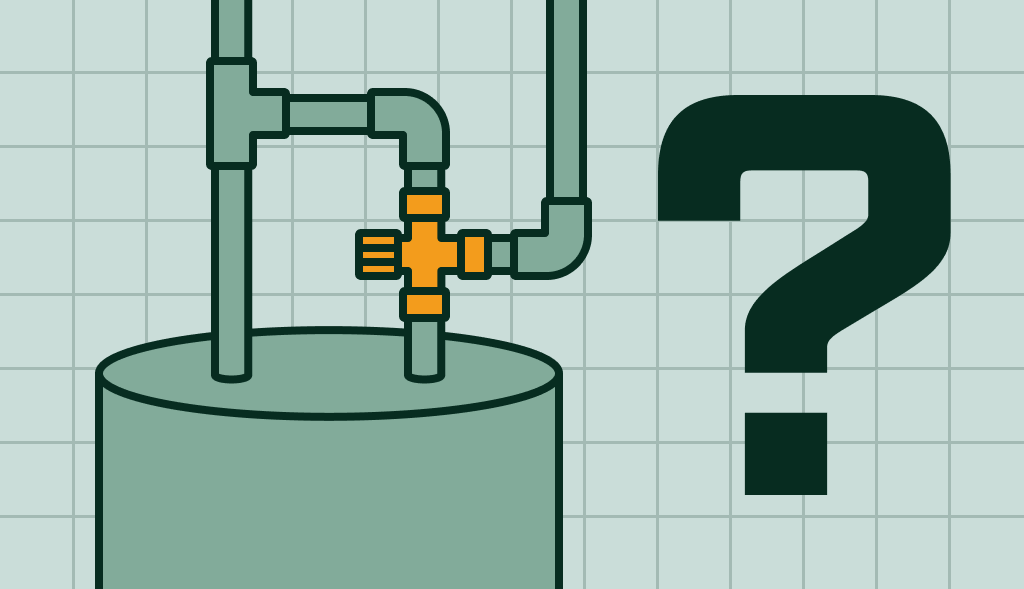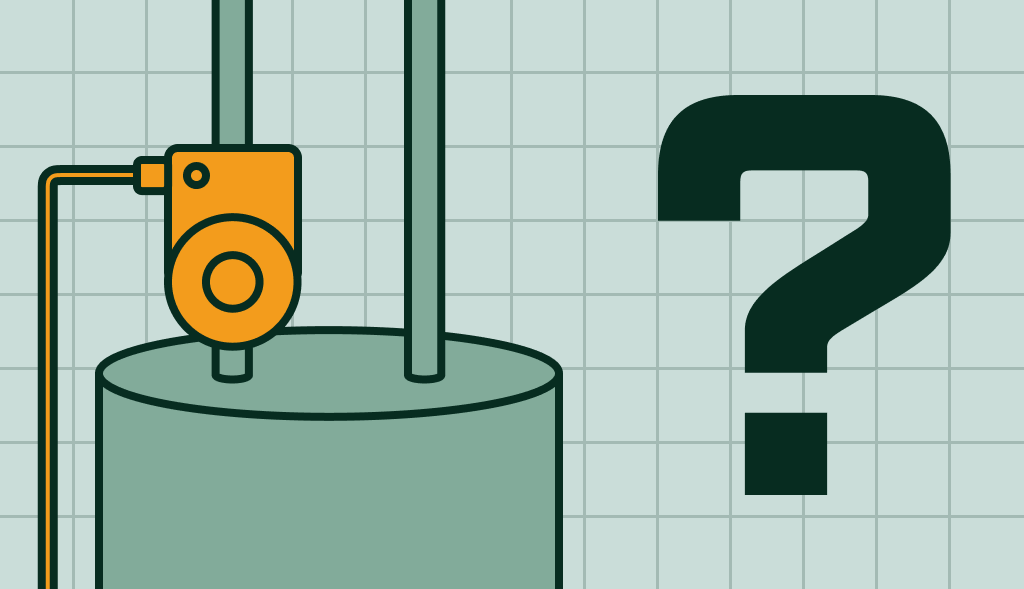Deep-Dive into a Water Heater Mixing Valve

With modern conveniences like hot showers and dishwashers a part of our daily lives, it’s easy to take the reliable supply of hot water in our homes for granted. However, there’s a complex mechanism behind the scenes ensuring that you receive this hot water safely and efficiently.
An often overlooked but critical component of this system is the water heater mixing valve, a mechanical device that significantly contributes to the safety, efficiency, and overall performance of your water supply.
Mixing valves are used quite widely, as they enable you to solve many problems, and in most of them there is no alternative to this type of valve. The device is shaped like a common tee, i.e. it has two inlets and one outlet.
If we send water flows with different temperatures (cold and hot) to the inlets, we can then obtain the following options at the outlet:
Cold water flows freely from inlet (A) to outlet (AB), hot water does not enter the outlet;
Cold and hot water arrive at outlet (AB) at the same time, while their flows are mixed and the water has an average temperature;
Cold water is blocked and only the high temperature (B) enters the outlet (AB)..
Sometimes there’s also a fourth position – when both channels are closed and no water enters the outlet. In this case, the device is more correctly called a four-way valve.
The device is capable of mixing two flows, opening the flow of one channel and blocking the flow of the other, dividing the flow into different channels and transforming the flow into another channel.
Unraveling the Mechanism of a Water Heater Mixing Valve
At its core, a water heater mixing valve, commonly known as a thermostatic mixing valve, is a device that blends hot and cold water. It is designed to deliver water at a constant and safe temperature at all outlets, regardless of fluctuations in the temperatures and pressures of the hot and cold water supply.
The reason for using a mixing valve lies in the inherent requirements for water storage. Water heaters are often set to high temperatures, often turned up to 140 degrees Fahrenheit or higher, to prevent the growth of harmful bacteria such as Legionella. However, these high temperatures carry the risk of scalding. This is especially concerning for children and the elderly, who are more susceptible to severe burns.
The thermostatic mixing valve addresses this issue effectively. By automatically mixing cold water with the hot water from the heater, the valve ensures the delivery of tempered water — water at a safe, yet comfortable temperature — to all household fixtures. It provides a fail-safe against hot water burns and makes hot water usage in the home a more secure process.
The Imperative of Installing a Mixing Valve in Your Water Heater
The installation of a mixing valve in your water heater system exceeds the boundaries of mere comfort and enters the domain of safety. It acts as a safeguard against scalding by reducing the hot water’s temperature before it reaches your faucets and showerheads.
Even with your water heater turned up to 140 degrees Fahrenheit, you can experience a safe and soothing shower or bath, without any scalding concerns.
But the benefits of a mixing valve are not just about safety. From an energy perspective, it helps in reducing heat waste by allowing the water heater to run at optimal levels, preventing unnecessary overheating.
It also ensures a consistent temperature supply, even when multiple household appliances like washing machines, dishwashers, and taps are drawing from the water supply simultaneously. Therefore, adding a water heater mixing valve to your system presents an energy-efficient, economically smart, and safe choice for homeowners.
Regular Maintenance and Checks for the Optimal Operation of Your Mixing Valve
The longevity and effectiveness of your mixing valve are hinged on proper maintenance and regular checks. The best way to assess if your valve is working properly is by testing the water temperature.
Run hot water at a faucet closest to the water heater and after a few minutes, measure the temperature using a standard cooking or digital thermometer.
The water temperature should be close to the value set on the mixing valve, which is usually around 120 degrees Fahrenheit for a typical residential setting. If the water temperature is notably hotter or colder, it could indicate that your valve isn’t functioning properly.
Such discrepancies might require simple solutions like adjusting or recalibrating the valve to deliver the desired water temperature. But, they can also point to more significant issues like a malfunctioning water heater or problems with the water supply.
In such cases, it’s recommended to contact a professional plumber who can diagnose and resolve the issue accurately.
A Look Ahead
With advancements in technology, we’re seeing the development of newer models of thermostatic mixing valves that offer advanced features. Some valves now come equipped with thermal disinfection features for additional safety. Others include built-in shut-off features that stop the flow of water if the cold water supply fails, preventing any chance of scalding. Such features reinforce the crucial role of mixing valves in ensuring a safe and comfortable hot water experience in our homes.
In Conclusion
The water heater mixing valve, a crucial but often overlooked component, plays a pivotal role in maintaining a comfortable and safe water temperature in our homes.
Through regular maintenance and temperature checks, homeowners can ensure the efficient functioning of their water heaters, protect against potential hot water burns, and secure a steady supply of tempered water.
Whether you’re installing a new water heater or contemplating an upgrade, the water heater mixing valve is an essential consideration. This relatively small investment can deliver substantial benefits, enhancing the comfort, safety, and energy efficiency of your home. So, if you haven’t yet, it’s time to pay some attention to this critical component of your water heater system.
Blog
Water Heater Recirculating Pump : Why And How Does It Work?
What is a Hot Water Recirculating Pump and How Does It Benefit Your Home? Every homeowner knows the inconvenience of waiting for hot water to […]
Water Heater Pressure Relief Valves: What You Need to Know
Water heater pressure relief valves are essential components that protect your water heater from overheating or overpressurizing. Without them, your water heater could become a […]

